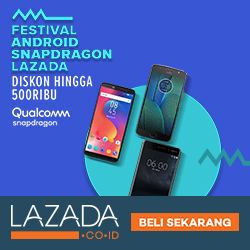
The cold is the most commonly occurring illness in the entire world, with more than 1 billion colds per year reported in the United States alone. The common cold is a self-limiting illness caused by any 1 of more than 200 viruses.
The common cold produces mild symptoms usually lasting only 5-10 days. In contrast, the "flu" (influenza), which is caused by a different class of virus, can have severe symptoms.
Self-Care at Home
* To date, no specific cure has been found for the group of viruses that cause the common cold. Antibiotics kill bacteria, not viruses, and are of no use in treating a cold.
* It seems unlikely that a single antiviral medication will be discovered in the near future that can target the over 200 different cold viruses. That is true in part because the viruses genetically change (mutate) each season just enough to prevent the development of a specific treatment for that virus.
* The good news is that you can take several steps to alleviate the symptoms once you have contracted a virus.
* Congestion: Drink plenty of fluids to help break up your congestion. Drinking water or juice will prevent dehydration and keep your throat moist. You should drink at least 8-10, 8-ounce cups of water daily.
o Fluids might include water, sports drinks, herbal teas, fruit drinks, or ginger ale. Your mother's chicken soup really can help.
o You can give your children colas, but don't include them in the 8-10 cups of fluid per day. Cola, coffee, and other drinks with caffeine work to increase urine output when your goal is to increase fluids in your system.
o Inhaled steam may ease your congestion and drippy nose.
+ Hold your head over a pot of boiling water and breathe through your nose. Be careful. If the steam burns your nose, breathe in more slowly.
+ You can put a pot or teakettle on a trivet on a table and hold a towel around the steam and your head.
+ You can buy a humidifier, but the steam will be the same.
+ Moisture from a hot shower with the door closed, a saline nasal spray, or a room humidifier is just as useful.
* Fever and pain: Medications such as acetaminophen (Tylenol) or ibuprofen (Advil, Motrin) will help decrease fever, sore throat pain, and relieve body aches.
o High fever usually is not associated with the common cold and may be indicative of "the flu"—a more severe illness caused by an influenza virus. Report to your doctor any temperature greater than 102°F.
o Never give a child aspirin or medications containing aspirin. In children younger than 12 years, aspirin has been associated with Reye syndrome—a potentially fatal liver disorder.
* Cough: The cough is a reflex that occurs when your airway passages are irritated. Cough preparations are usually divided into 2 main categories:
o Suppressants: These act by blocking your cough reflex. As a general rule, use a suppressant for a dry, hacking cough. The agent usually found in over-the-counter cough suppressants is dextromethorphan (Benylin, Pertussin CS or DM, Robitussin Maximum Strength, Vicks 44 Cough Relief).
o Expectorants: A cough associated with excessive mucus production, or phlegm, warrants use of an expectorant. Guaifenesin is the most common active ingredient in over-the-counter expectorants (such as Anti-Tuss, Fenesin, Robitussin, Sinumist-SR).
* Sore throat
o Lozenges and topical sprays can provide relief from sore throat pain. In particular, lozenges containing zinc may relieve many cold symptoms better than other types of throat lozenges. The benefits of zinc are not proven, however, and it can cause stomach upset.
o A warm saltwater gargle can relieve a scratchy throat.
* Nasal congestion: Nasal decongestants help relieve clogged nasal and sinus passages caused by excessive mucus secretion. There are 2 general types of decongestants available:
* Nasal congestion: Nasal decongestants help relieve clogged nasal and sinus passages caused by excessive mucus secretion. There are 2 general types of decongestants available:
o Oral medications come in either pill or liquid form and act by shrinking engorged blood vessels in the nasal and sinus passages. They work well because the medication is distributed in the bloodstream. Oral decongestants often are associated with stimulant side effects such as increased heart rate, increased blood pressure, and insomnia. A commonly used over-the-counter oral decongestant is pseudoephedrine (Actifed, Sudafed, Triaminic).
o IMPORTANT! The Food and Drug Administration has issued a public health advisory concerning the medication phenylpropanolamine (PPA), which has been used for many years in over-the-counter nasal decongestants. A recent study reported that PPA increases the risk of a bleeding stroke, primarily in women. Although the risk of a bleeding stroke is low, the FDA recommends that PPA be discontinued and removed from all medications. Although most pharmacies have removed this product from their shelves, it is prudent to carefully examine the label to be sure that the medication you buy (or have at home) does not contain PPA.
o Nasal spray decongestants act similarly to oral decongestants but have the advantage of acting only in the area applied, usually without the stimulant side effects. The most common active ingredient in nasal sprays is oxymetazoline (Afrin, Dristan nasal spray, Neo-Synephrine, Vicks Sinex). Nasal sprays do have side effects, however. Excessive use of nasal decongestants has been associated with dependency. Additionally, a "rebound" effect may occur in which nasal symptoms recur after you abruptly stop the medication. Use these no longer than the package instructions indicate—usually 3 days.
Tuesday, August 18, 2009
Self Care at Home : Colds Treatment
 Admin on
Admin on  12:17 AM
12:17 AM

















1 komentar:
pertamax niy... baca2 dengan teliti petunjuk penggunaan... walo itu obat bebas... sip infonya bu
Post a Comment